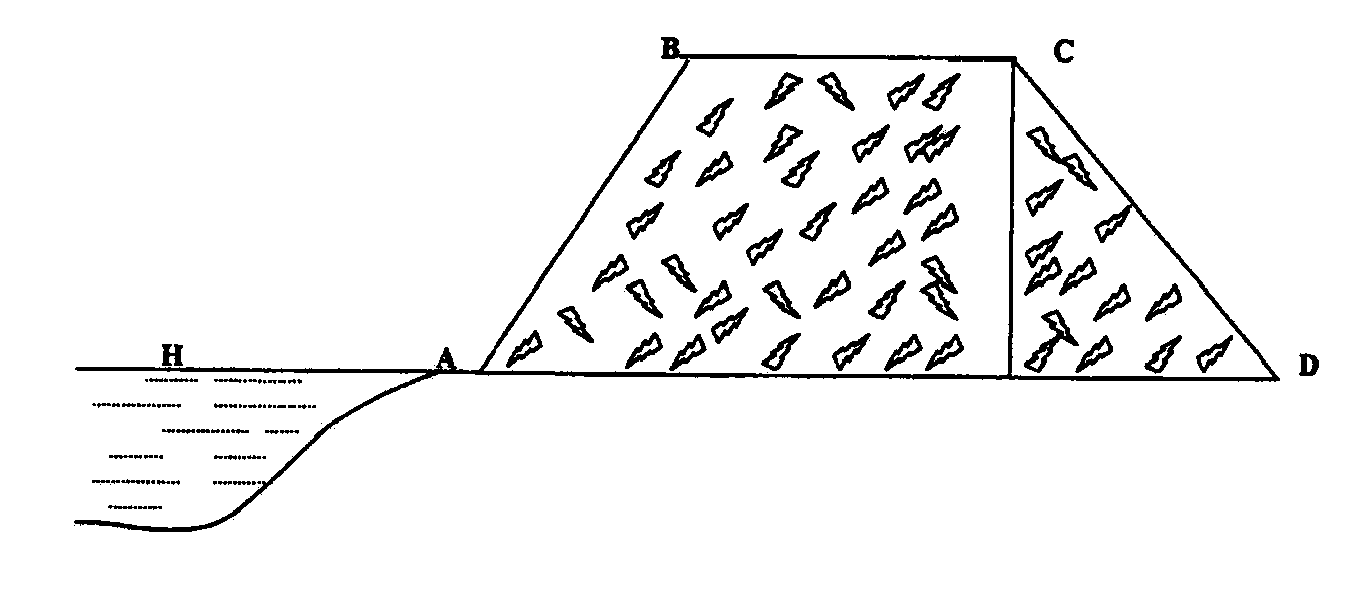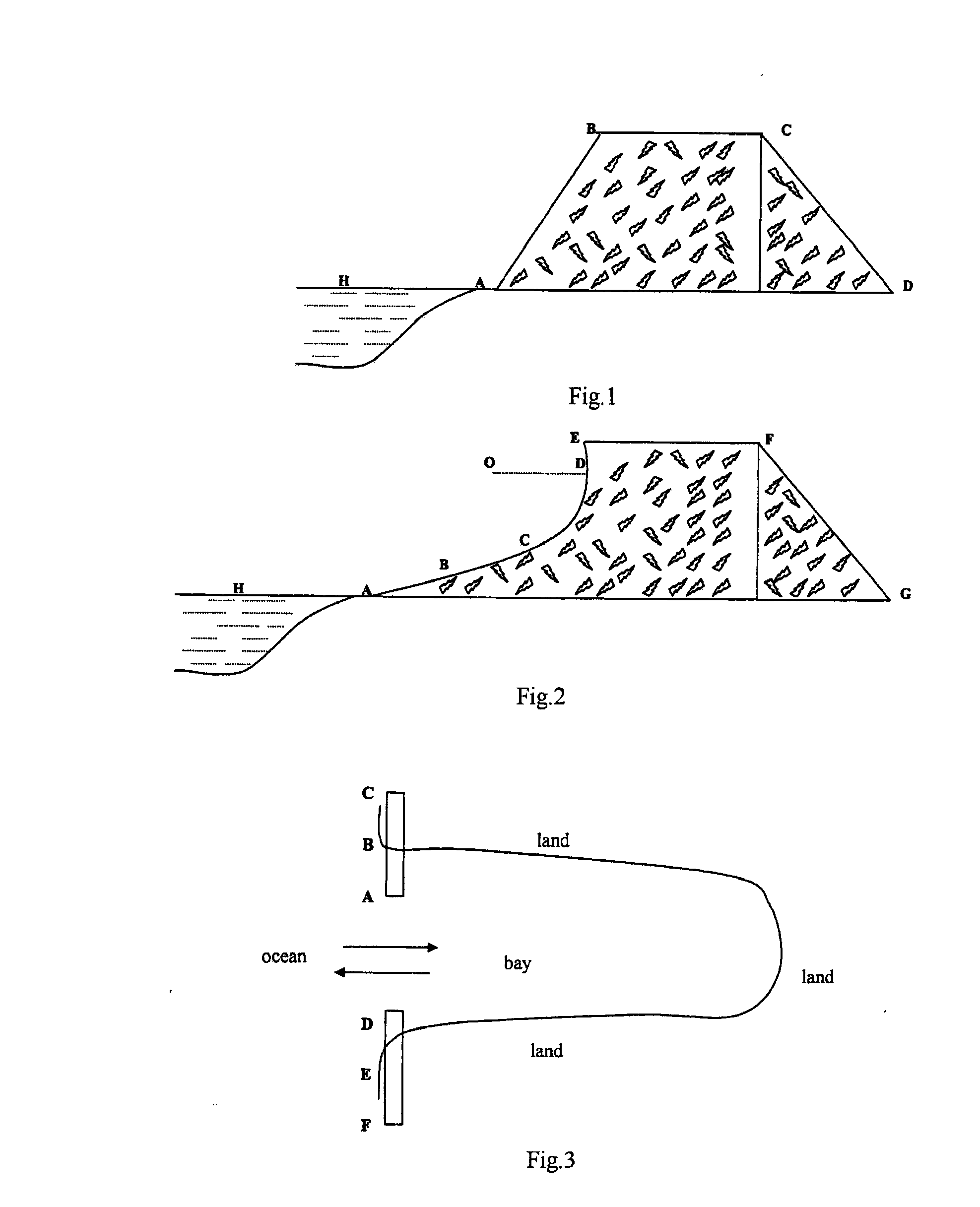Breakwater
a technology of breakwater and tsunami, which is applied in the field of tsunami breakwater, to achieve the effect of improving the capacity of the breakwater to stand up to the ocean waves and greatly reducing the impact force of ocean waves
- Summary
- Abstract
- Description
- Claims
- Application Information
AI Technical Summary
Benefits of technology
Problems solved by technology
Method used
Image
Examples
Embodiment Construction
[0041]A prior art breakwater is shown in a sectional view taken along its cross section, as shown in FIG. 1, in order to indicate the characteristic differences between a typical breakwater and a tsunami breakwater according to the invention. The cross section of the breakwater shown in FIG. 1 is a trapezoid ABCD with a shorter top side BC, a longer bottom side AD and a lateral side AB facing the sea H being in the form of a straight line, wherein the bevel side AB indicates that a surface of the prior art breakwater facing the sea is in the form of a slope.
[0042]FIG. 2 is a sectional view of the tsunami breakwater according to the invention taken along its cross section. Viewed from its cross section, the breakwater is a curved side trapezoid ABCDEFG with a shorter top side EF, a longer bottom side AG and a lateral side ABCDE facing the sea H being in the form of a curve. The position A of the curved side trapezoid close to the seashore is the lowest point, and the neighboring area...
PUM
 Login to View More
Login to View More Abstract
Description
Claims
Application Information
 Login to View More
Login to View More - R&D
- Intellectual Property
- Life Sciences
- Materials
- Tech Scout
- Unparalleled Data Quality
- Higher Quality Content
- 60% Fewer Hallucinations
Browse by: Latest US Patents, China's latest patents, Technical Efficacy Thesaurus, Application Domain, Technology Topic, Popular Technical Reports.
© 2025 PatSnap. All rights reserved.Legal|Privacy policy|Modern Slavery Act Transparency Statement|Sitemap|About US| Contact US: help@patsnap.com



